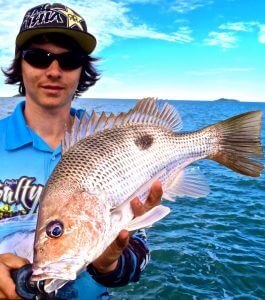CODE OF PRACTICE FOR RELEASING FISH
ANSA CODE OF PRACTICE FOR RELEASING FISH
The following code of practice, revised and adopted in March 2002, is recommended to ANSA members where fish are intended to be released. Fish should be caught, handled and released in a manner that will ensure that they are returned to the water in as healthy a condition as possible.

TACKLE TO USE
- Use tackle that will land a fish quickly to minimise exhaustion however avoid bringingin the fish too quickly as this may increase the risk of damage from the fish thrashing about once landed
- Use artificial lures with barbless hooks where possible as that results in fewer fishbeing gut hooked and hooks are easier to remove without further damage to the fish.
- For bait fishing use hook patterns such as circle hooks to maximise the likely hood of the hook being lodged in the jaw and minimise damage through gut hooking.
- Use a de-hooker such as a “Hookout” or long nosed pliers for quick removal of hookstaking care not to damage the fish further. If the fish has swallowed the hook do not attempt to remove it. Leave the hook where it is and cut the line as close to the hook as possible.
- Use a knotless landing net as this removes less slime and reduces time out of thewater for the fish. Gaffs should never be used.
- Use a fish grip devise to assist in handling a fish for release.
HANDLING AND RELEASING FISH
- Plan ahead and make sure you have all equipment close at hand. Work rapidly butwithout haste to ensure the fish is out of the water for the least amount of time.
- Do not place a fish on a hot, dry surface for hook removal, use a wet towel on whichto rest the fish and use wet hands when handling it.
- Do not put fingers inside gill cover or eye sockets when handling fish for release. Afish grip device may be used and the body of the fish should be supported at all times when lifting to release the fish.
- Direct sunlight can damage fish eyes so ensure that they are shaded during time outof water.
REEF FISH CAUGHT IN DEEP WATER
- Reef fish caught in deep water may require special handling to improve survival when fishare brought to the surface from depths of around 20m or more the gases in their swim bladder may have been expanded significantly. This condition can be easily detected as the stomach of the fish is pushed out of its mouth.
- Venting of the air in the swim bladder may increase the survival rate of the fish thatare released by allowing them to return quickly to the bottom. There are a number of ways of venting fish and the most appropriate for a particular species should be used.
- Options such as weighted lines to return a fish quickly to the bottom may beconsidered as an alternative to venting especially if there are predators present.

